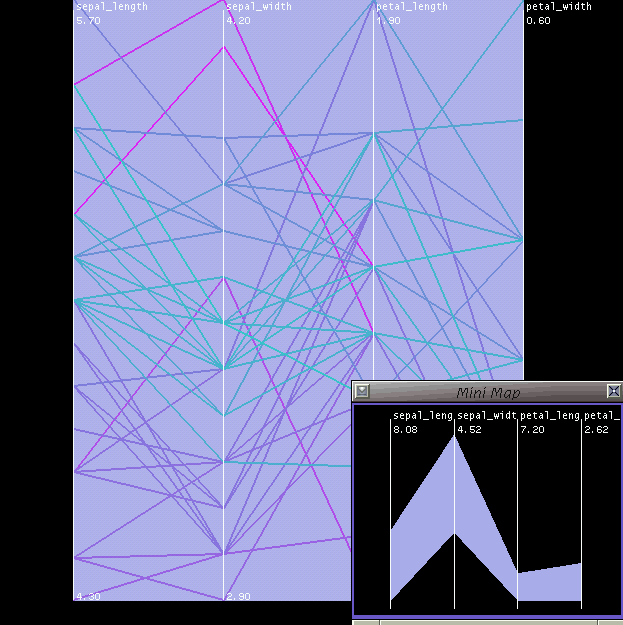 |
Problem
In parallel coordinates, the brushed subspace appears as a confined
strip across the coordinate axes.
For a narrow brush, it may be difficult to examine the data within
this confined strip.
To be able to study elements within a subspace, it is essential that we treat this subset of elements as a set of data in its own right, and place them in full view so that they can be examined as appropriate.
Solution
We introduce a magnification or distortion operation: dimension zooming.
How we do it ?
We scale up each of the dimensions with respect to the extents of the
brushed subspace. The subset of elements may then be examined as an independent
set. This zooming operation may be performed as many times as desired.
For a large dataset occupying a large range of values, this operation may
be invaluable for examining localized trends.
 |
One common problem with such scaling up operations is that it is easy to lose context of the big picture, and be lost wandering in some isolated subspace. To maintain contextual information, we display a mini-map showing the position of the currently zoomed space in relation to the entire data space. Figure 7 shows an instance of this zooming operation and the accompanying mini-map.